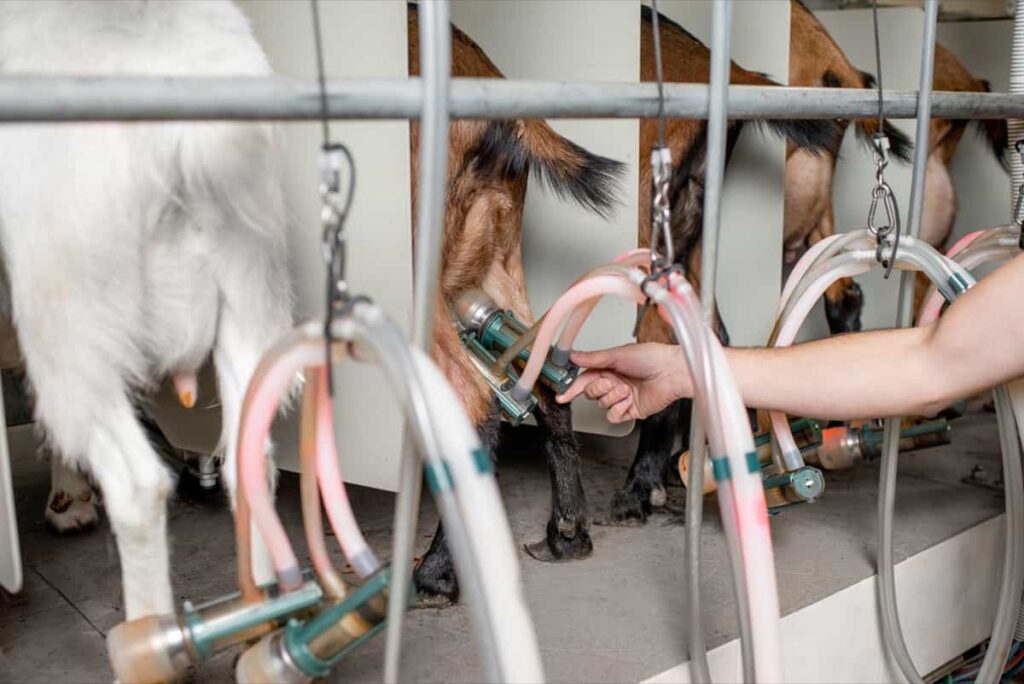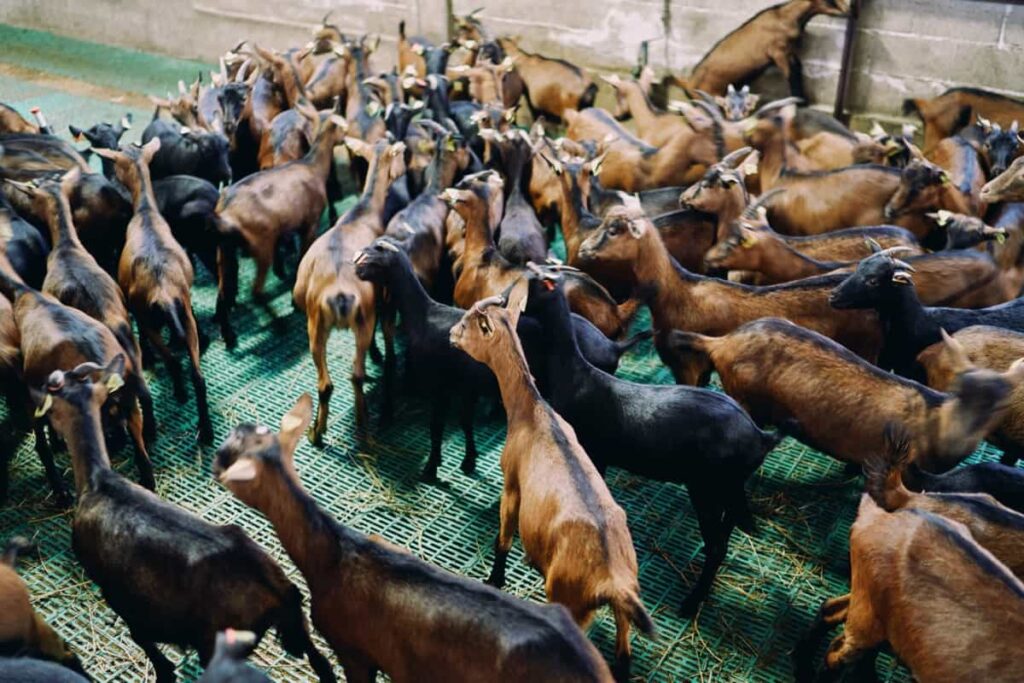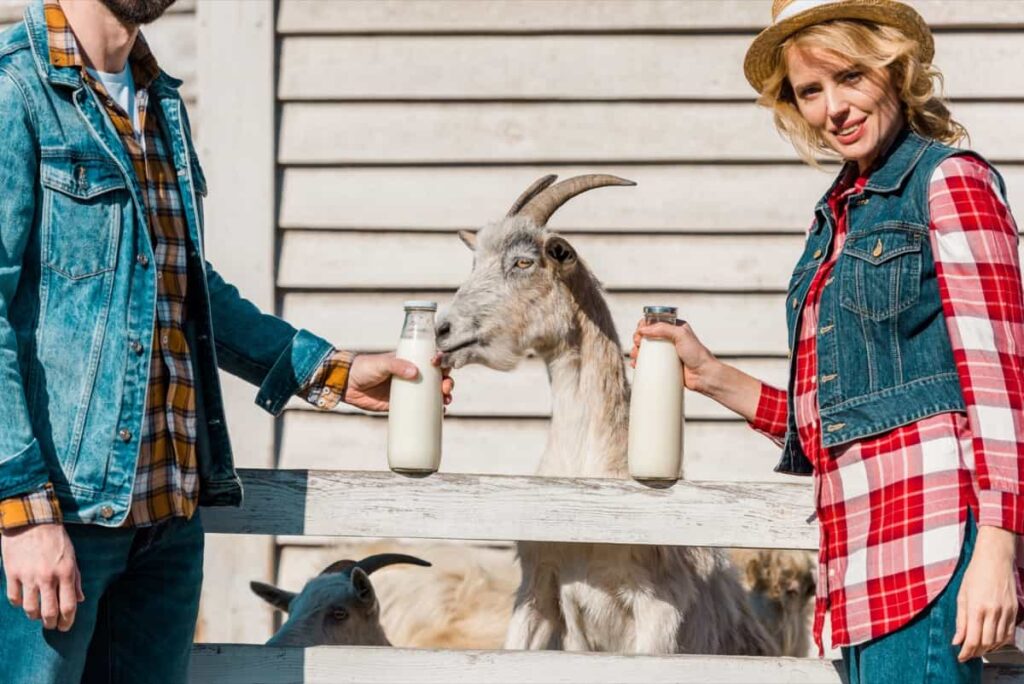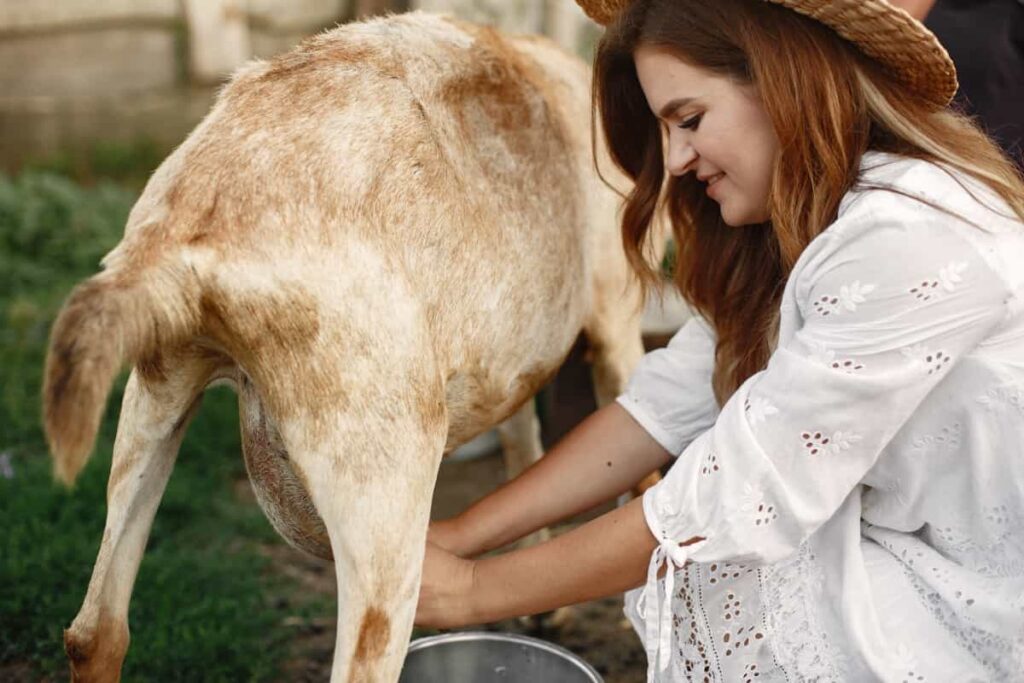Raising goats for milk production offers numerous benefits that make it an attractive venture for farmers and entrepreneurs alike. It has gained immense popularity in recent years, particularly for its milk production. To successfully venture into goat farming for milk production, it is important to develop a comprehensive business plan. This plan should outline your business goals, financial projections, marketing strategies, and operational procedures.

Goat Farming for Milk
Understanding the Basics of Goat Farming for Milk Production
Goat farming provides a sustainable source of income for farmers. With proper management and care, dairy goats can produce a significant amount of high-quality milk regularly. This opens up opportunities for farmers to tap into the growing demand for organic and locally sourced products. Moreover, raising dairy goats promotes environmental sustainability. Goat milk is easily digestible and highly nutritious. It contains essential vitamins, minerals, and proteins that are beneficial for overall health.
Developing a Comprehensive Business Plan for Goat Milk Farming
It would help if you determined the market demand for goat milk in your area. Research local dairy products suppliers and their customer base to understand potential opportunities and competition. Next, outline your production goals by considering factors such as the number of goats you can accommodate on your farm, their productivity levels, and the volume of milk you aim to produce. Identify your target audience whether it’s local consumers or larger-scale dairies – and tailor your marketing strategies accordingly.
Financial planning is essential in any business endeavor. Calculate start-up costs, including land acquisition (if necessary), fencing, shelter construction, milking equipment purchase or lease options, feed expenses, veterinary care fees, transportation costs, marketing expenses, and employee wages, if applicable. Analyze potential risks associated with goat farming, like disease outbreaks in the livestock industry, and ask for help from veterinarians when developing biosecurity measures against possible infections.
Obtaining the Necessary Licenses and Permits for Goat Milk Farming
It’s crucial to research and understand the regulations in your area. The main step is to contact your local agricultural department or relevant authorities to inquire about the permits needed for goat milk farming. Contact your local agricultural or livestock department to inquire about the specific licenses needed for goat milk farming. In many cases, you will need a permit specifically for dairy production or processing.
In case you missed it: How to Select Goats for Milk or Meat: A Simple Guide with Best Tips and Techniques

This typically involves demonstrating proper facilities, hygiene practices, and record-keeping procedures. To obtain licenses and permits for goat milk production, you will likely need to apply along with supporting documents such as facility plans, health certificates for animals, proof of water quality testing, and possibly even financial statements.
Understanding Regulatory Requirements for Goat Milk Farming
These regulations are put in place to ensure the safety and quality of the milk produced. In addition, there may be regulations regarding milk testing and storage facilities. Regular testing of milk samples is often mandatory to ensure compliance with health standards. Proper storage facilities must also be established, following guidelines for temperature control and cleanliness.
Another vital aspect is maintaining proper records. Animal welfare is another critical consideration in goat milk farming. It’s essential for aspiring goat farmers engaged in dairy production to thoroughly research local laws pertaining specifically to raw milk sales if they plan on selling their products directly from their farms.
Selecting Suitable Breeds and Herd Management Practices
- Saanen – These goats can provide a high daily milk supply of 2-3 gallons, although their butterfat content may be slightly lower compared to other breeds.
- Alpine – If you have limited space or live in an urban setting, the Alpine breed might be more suitable. They adapt well to different climates and can provide around a gallon of milk per day, with some exceptional individuals producing 2-3 gallons daily.
- Nubian breed – With good genetics, they can produce up to 2 gallons of rich and creamy milk per day. Additionally, their milk has a higher butterfat content, which makes it great for cheese-making or soap production.
- LaMancha breed – They have friendly temperaments and can supply around 1-2 gallons of milk per day with a butterfat content of approximately 4%.
Choosing the right breed ultimately depends on your specific needs and preferences as a goat farmer in terms of space availability, climate conditions, desired product outcomes (e.g., cheese vs fluid milk), and management capabilities.
Creating an Optimal Feeding and Nutrition Plan for Dairy Goats
Goats have specific dietary requirements that need to be met for them to produce high-quality milk. It’s important to provide your goats with a balanced diet consisting of roughage, concentrates, minerals, vitamins, and clean water. Minerals are essential for goat health and can be provided through mineral blocks or loose mineral supplements.
Monitoring body condition score (BCS) is crucial when determining the adequacy of the feeding program. Adjustments may need to be made depending on factors such as lactation stage, age of the goat, weather conditions, and individual needs. Regularly consulting with a veterinarian or nutritionist can help fine-tune the feeding program according to these variables.
Implementing Effective Health Management Practices for Dairy Goats
By prioritizing the health and well-being of your dairy goats, you can ensure a high-quality milk supply and prevent the spread of diseases within your herd. Follow regular veterinary check-ups to monitor the overall health of your goats. A veterinarian can provide vaccinations, deworming treatments, and advice on nutrition and healthcare. Maintaining clean and sanitary conditions is also vital for preventing disease transmission. Observation is key to identifying any signs of illness in your dairy goats.
In case you missed it: Best Meat and Milk Goat Breeds in India: Considering these Goats in Commercial Goat Farming Business

Be vigilant for symptoms such as changes in appetite or behavior, coughing or sneezing, diarrhea or abnormal feces consistency, lameness, or stiffness in movement. Make sure to consult with a veterinarian if you notice any concerning signs. Preventative measures like vaccination against common diseases such as clostridium perfringens types C&D or tetanus are recommended by veterinarians based on local considerations such as climate conditions and disease prevalence.
Developing Marketing Strategies for Goat Milk and Related Products
One effective approach is to target niche markets that value the unique qualities of goat milk, such as health-conscious consumers or individuals with lactose intolerance. Another strategy is to focus on product diversification. Building strong relationships with local retailers and distributors is also crucial for marketing success. Utilizing digital platforms like social media and e-commerce websites is another essential component of your marketing strategy.
Financial Planning and Budgeting for Goat Milk Farming Business
You need to consider the initial investment required for purchasing land, constructing housing facilities, buying goats, equipment, and other necessary supplies. It is important to conduct thorough research and get quotes from different suppliers to ensure you are getting the best deals.
Next, you should estimate your operational expenses such as feed costs, veterinary care, labor wages if applicable, and utilities like electricity and water bills. These ongoing expenses can vary depending on factors like herd size and local market conditions. Developing a strong business brand is crucial for attracting customers and increasing sales.
Challenges and Solutions in Goat Farming for Milk
Lack of Knowledge: Starting a goat milk farming business requires knowledge about breed selection, nutrition, health management, and marketing. Lack of experience or information can hinder success. Invest time in learning through books, online resources, workshops, or even partnering with experienced farmers.
Health Issues: Goats may face various health issues, such as parasites, infections, or nutritional deficiencies, which can impact milk production and overall profitability. Implement effective health management practices, including regular veterinary check-ups, vaccination schedules, and proper nutrition plans.
Marketing Challenges: Finding reliable markets for selling goat milk products can be challenging initially, especially if you’re new to the industry. Network with local dairy product vendors or explore direct marketing options such as selling at farmer’s markets or establishing an online presence through social media platforms.
Frequently Asked Questions (FAQ) on Goat Farming for Milk
What Kind of Infrastructure Is Necessary for Goat Farming?
To ensure the comfort and well-being of your goats, you’ll need a few essential structures. A sturdy barn or shed will shelter goats from harsh weather conditions and predators during the night. Fencing is also crucial to prevent escapees and protect your goats from wandering into dangerous areas.
How long does it take for a goat to start producing milk?
Female goats typically start producing milk after giving birth, which occurs around nine months of age.
What Permits or Licenses Do I Need to Sell Goat’s Milk Commercially?
The requirements vary based on your location but generally involve obtaining proper licensing from local health departments and meeting specific regulations regarding the handling and processing of dairy products.
In case you missed it: Effective and Profitable Commercial Goat Farming: Key Rules to Start from Scratch, Best Milk and Meat Goat Breeds

Conclusion
Raising dairy goats can be a profitable endeavor. Goats have a higher feed conversion efficiency compared to cows, meaning they require less food per liter of milk produced. They also have lower maintenance costs since they generally require less space and resources than larger livestock.
- Goat Feed Options for Weight Gain
- Types of Grass Growing for Goat Farm
- How to Train Goats for Milking: A Beginners Guide
- Goat Milking Practices and Equipment: A Beginner’s Guide
- Goat Farming for Fiber: Producing Mohair and Cashmere
- Maximizing Goat Milk Production: Tips for Dairy Goat Farmers
- Goat Farming as a Family Business: Strategies for Success
- Profitable Kenya Goat Breeds for Commercial Dairy and Meat Business
- Unlock the Secrets of Oberhasli Goat: Discover Raising and Management Practices